MXA INTERVIEW: THE STRANGE JOURNEY OF JAMMIN’ JIMMY WEINERT
“JAMMER,” YOUR FATHER OWNED A MOTORCYCLE SHOP, AND YOU BEGAN RACING MOTOCROSS AND FLAT TRACK? Yes, just put me on something with wheels and I could ride it. At 17, I was riding a Triumph Terrier Cub 150 in flat track. At that time, I was racing a little of this and a little of that. Eventually, I went to the Florida Winter-AMA series riding a Maico, and then Yamaha hired me. They did not need another flat-track rider, as they had Kenny Roberts, so I was their motocross rider.
HOW DIFFERENT WAS THE YAMAHA FROM THE MAICO? It was much lighter, and the powerband was so much higher than the Maico’s. The first time I rode the Yamaha, I was bouncing around all over the track, and I thought, “Uh-oh, I have to get used to this thing a bit.” We had the fastest bikes at the time. Gary and DeWayne Jones were my teammates, and their dad Don was the team manager.
YOU WERE ON THE FIRST AMERICAN MOTOCROSS DES NATIONS TEAM. Yes, that was in 1972 in Holland. Brad Lackey, Jim Pomeroy and Gary Jones were my teammates. It was a sand track. We had seen photos and heard stories about Dutch sand tracks but thought, “How bad can this get?” That sand was deep! We wound up finishing seventh, and I don’t know how we did that; the Europeans just flew through it.
“I WAS ALWAYS A GOOD MUD RIDER BEING FROM NEW YORK. I PRACTICED WHETHER IT WAS MUDDY OR DRY. I ALWAYS TOLD MYSELF, ‘ADVERSE CONDITIONS DO NOT AFFECT YOU!’”
IF THE YAMAHAS WERE SO FAST, WHY DID YOU MOVE TO KAWASAKI FOR 1973? Something went south there. Honestly, I cannot recall if it was Yamaha, the Joneses or some combination of all of us. There was so much “angriness” going on within the team, so I went over to Kawasaki for 1973 and 1974. Whatever it was, that was it. Gary and his brother went to Honda, and I went to Kawasaki.
WHAT WAS IT LIKE AT THE BEGINNING OF AMA PRO MOTOCROSS? The first full year of the AMA National Motocross Championship was 1972. Back then, we did the first three or four races in California, and then the series came back east. Don Jones was smart enough to have his kids race in California and then bring them to the East Coast. So, Gary had a big lead on all the rest of us, points-wise. I wound up second overall, but I did not do all the races. Later in 1973, we had a firmer schedule. We all did all the races, and it was a real series.
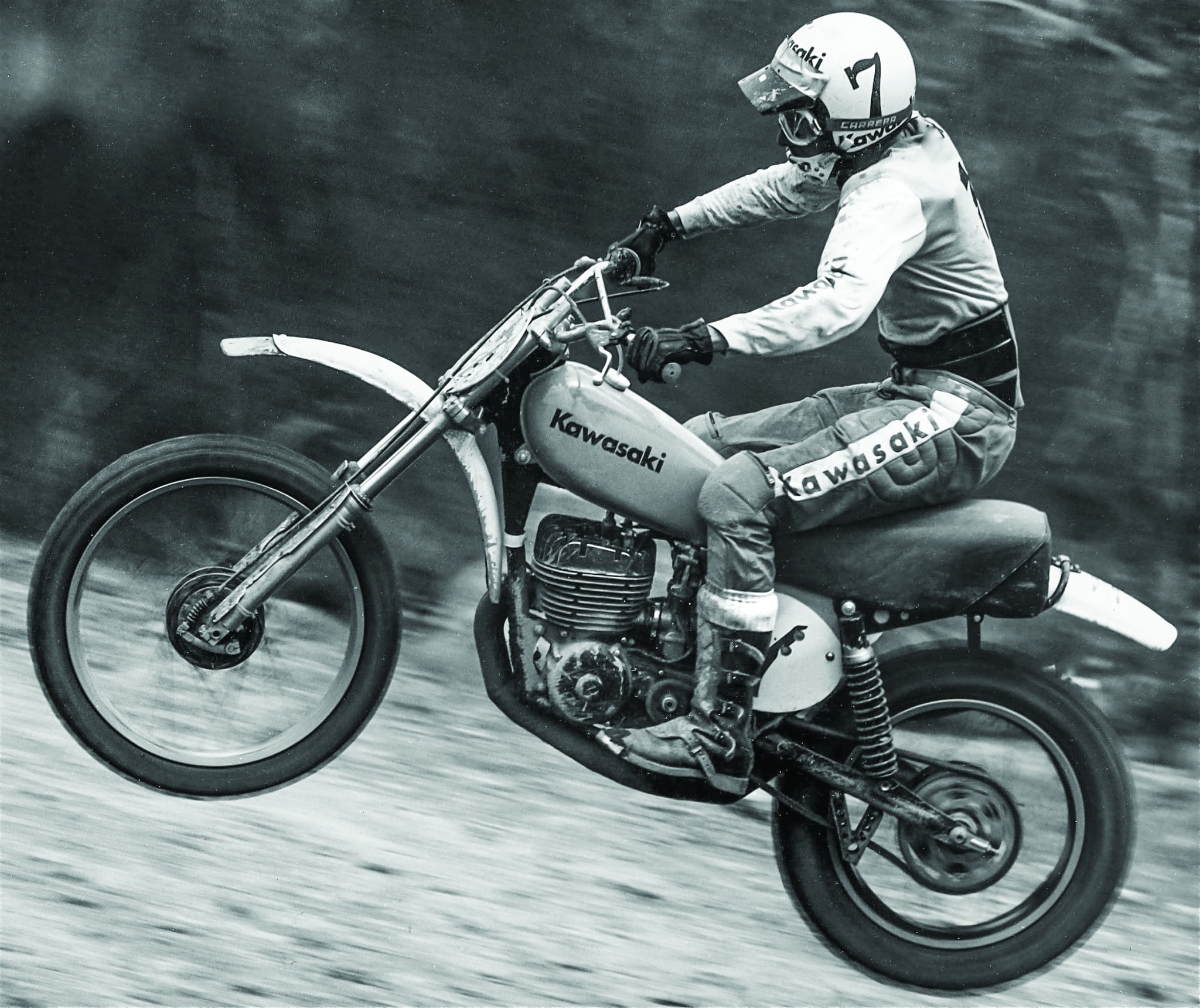
YOU MADE HISTORY IN 1973 BY BEING THE 1st AMERICAN TO WIN A TRANS-AMA. WHAT DO YOU REMEMBER? Yes, sir, it was at Rio Bravo in Texas. I got the holeshot in both motos. I led the first three laps, and on the fourth lap I thought, “The Euros should be coming.” But, they didn’t come, and I got second. I forget who passed me. It could have been Arnie Kring or Bengt Aberg. (Editor’s note: Actually, Jimmy was passed by both Adolf Weil and Arne Kring.) In the second moto, I again got the holeshot, and once again I was thinking, “They should be coming,” but again they didn’t and I won. I guess that was my day. That year I tried so hard to win the AMA 250 National Championship, but things never went my way. That is racing, and Gary Jones would win another 250 AMA National Championship.
BUT IN 1974, YOU TOOK THE 500 TITLE FOR TEAM KAWASAKI. I won the four rounds in a row, which were all mud races. I was always a good mud rider being from New York. I practiced whether it was muddy or dry. I always told myself, “Adverse conditions do not affect you!” The California boys had to learn that, but they picked it up.
AGAIN, YOU WERE CHOSEN FOR THE MOTOCROSS DES NATIONS TEAM. Yes, we did pretty well and finished second overall in 1974 in Sweden. That year it was Jim Pomeroy, Brad Lackey, Tony Distefano and me. I don’t know if it was the first moto or the second moto, but off the start, we came around the first turn, and there was a big pileup. Bikes were all over the place. I got through it somehow, as the rest of the team did. It wasn’t one or two bikes; we were talking 10 to 15.

DID YOU EVER HAVE INTEREST IN GOING TO DO THE GPs LIKE BRAD LACKEY DID? Not really. He went over there for Kawasaki, and they wanted me here. I went over a few times and did some GPs and even won an international race on a 250 that Joel Robert and Brad were at. I have a funny story about Joel if you want to hear it.
YOU BET. This goes back to 1969 when Brad and I were on CZs. We were in Georgia, and Joel Robert was bent over signing up for a race. We put a firecracker in his back pocket and lit it. It went off, and he did not even flinch. Brad and I just looked at each other and said, “Let’s get out of here.” Joel was such a joker that he appreciated that. Brad and I still laugh about it.
YOU WERE ALWAYS A GOOD INTERVIEW. I took a public speaking course in college and that helped tremendously. You just have to be yourself. Nowadays, you cannot be yourself, because today’s riders seem to be reading from a script. The guys racing in the old days would not have stayed on script. Do you think Bob Hannah was going to say what they told him to say? No way, Bob would be trash-talking. It would be great to hear that type of podium speech again.
“DO YOU THINK BOB HANNAH WAS GOING TO SAY WHAT THEY TOLD HIM TO SAY? NO WAY, BOB WOULD
BE TRASH-TALKING.”
WHAT MADE YOU GO BACK TO YAMAHA FOR 1975? Kawasaki was not jumping on the bandwagon to hire me back. I won the 1974 500 National Championship, but they were taking it very nonchalantly. They figured I would re-sign with them. I was sure that they wanted me, but they wanted to play it cool. It was weird. Finally, I told them, “If you guys don’t want to talk to me, I am going to go down to Yamaha and sign with them.” They thought I was joking. I wasn’t. I wanted to get my deal done. I signed with Yamaha.
HOW WAS IT RETURNING TO YAMAHA? The sport was getting pretty crazy by then. Yamaha had hired a guy named Gordy Muetz. He was a big boy and a Harley guy. His job was to pick me up, take me to practice during the week and make sure I did my motos. They also flew him to the races with me so I would not get into trouble. Whatever. I did win the 1975 AMA 500 Championship again.
THEN WHY DID YAMAHA LET YOU GO AFTER ONE YEAR? Later I realized that I was just too much for Yamaha to handle because of my drinking. I drank my whole life. When they would ask, “If there is one thing in your life, what would you change?” I answered, “I just wish I were completely sober.” I am now 30 years sober.
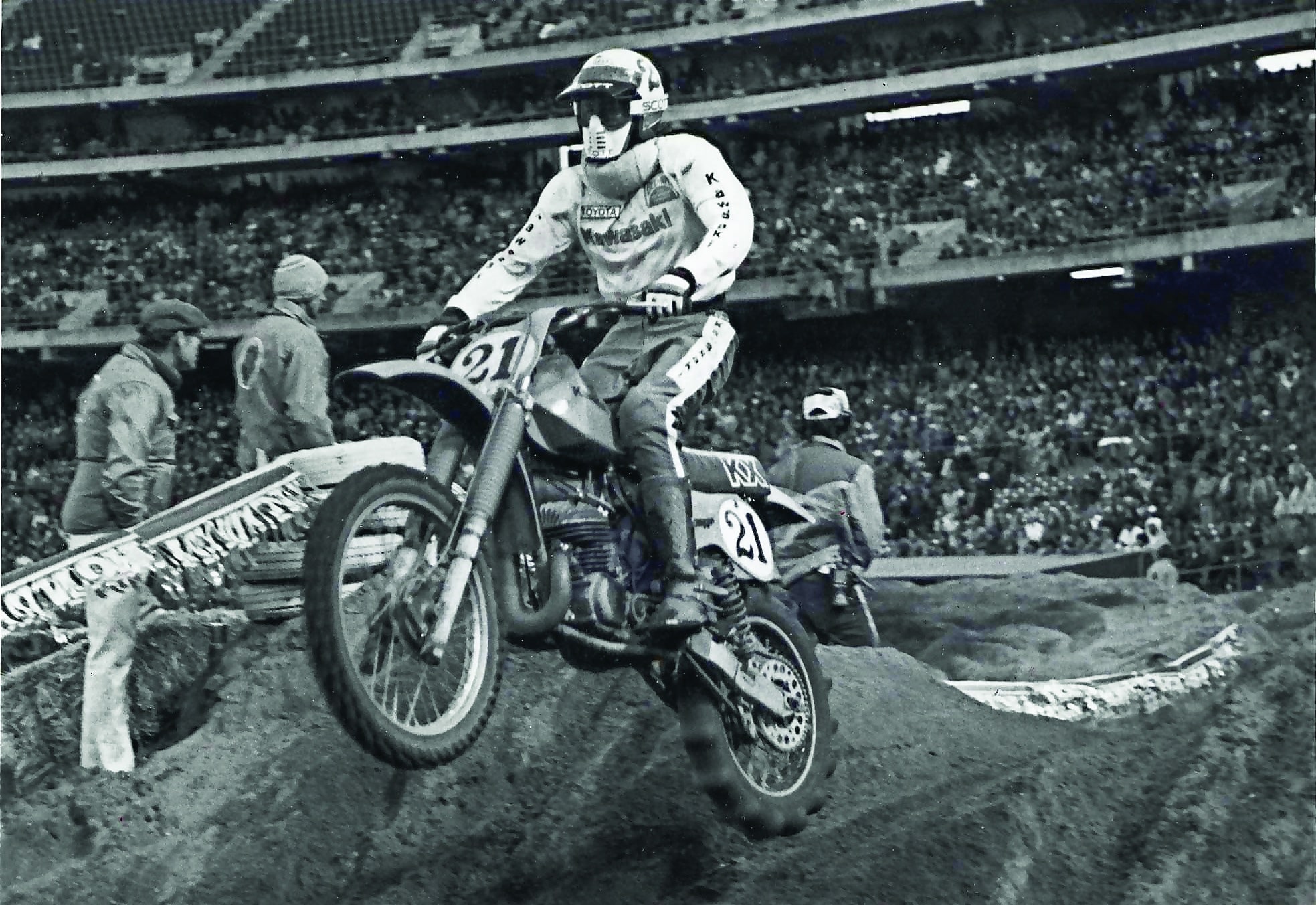
HOW MUCH WERE YOU DRINKING? Back in the day, on Sunday night after the races, everyone drank—from the AMA officials to the team managers. We all hung out and drank. Once in a while, I would screw up on a Saturday night and drink, but I would still win with a hangover. I did not realize it at the time, but I was an alcoholic. A couple of beers was nothing. That was like putting a little oil on the chain.
STILL, YOU WON THE 1975 AMA 500 NATIONAL CHAMPIONSHIP AND TOOK ANOTHER TRANS AMA-RACE WIN THAT YEAR. That’s true. That Trans AMA win was in Ohio. I saw Roger DeCoster coming, and we only had a couple of laps to go. He got within 10 seconds behind me. Roger came into my pits and said, “If I would have had one more lap, I would have beaten you!” I said, “Roger, listen to me carefully. Do you know how many races I would have won if I only had one more lap? Now, get out of here. Let me enjoy my win, the one that I beat you in.” Roger was a great rider, but he did not like to lose.
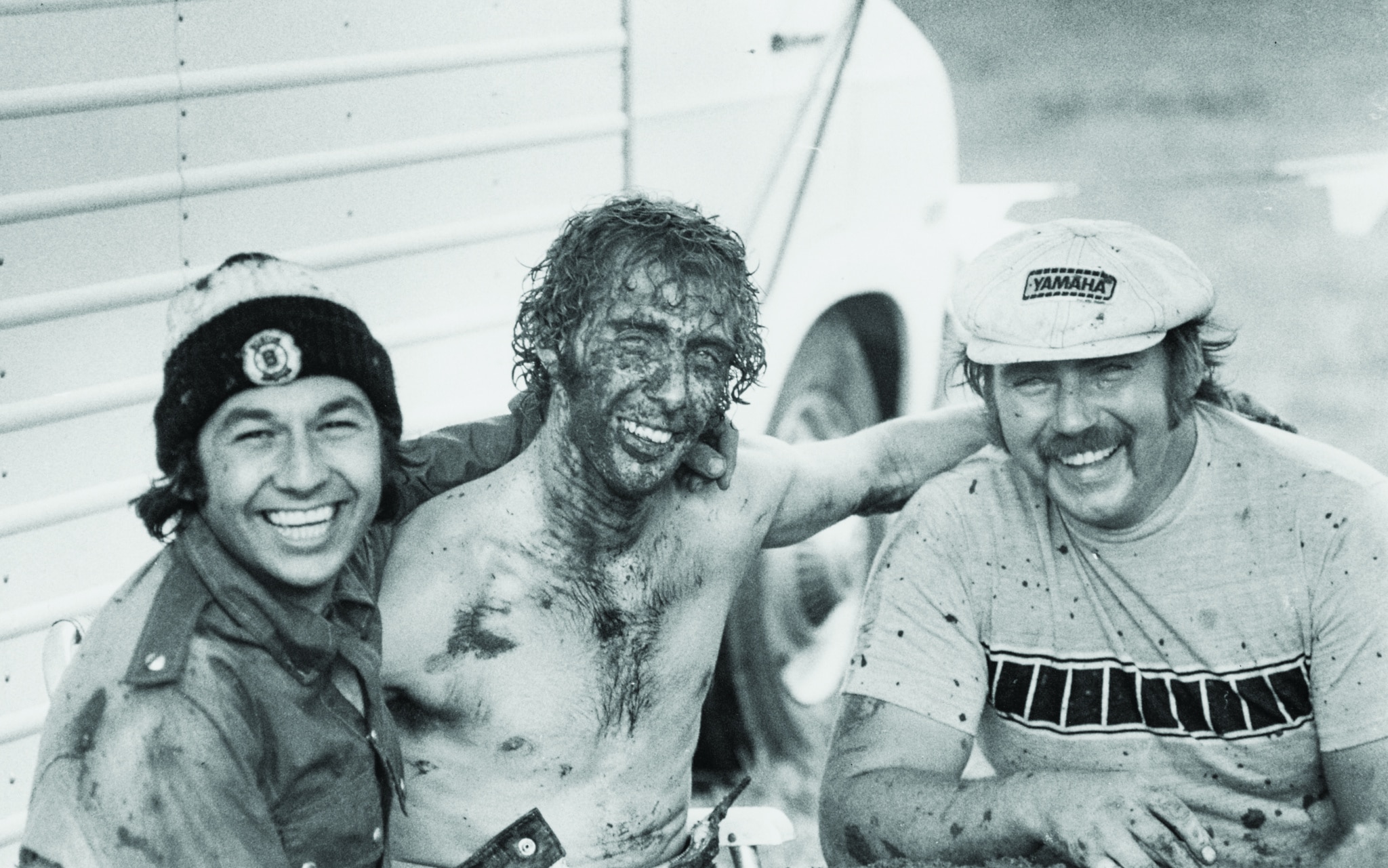
BEFORE MOVING ON FROM YAMAHA, WE HAVE TO TALK ABOUT THE BATTLE OF NEW ORLEANS, WHERE YOU CLINCHED YOUR SECOND 500 NATIONAL CHAMPIONSHIP. There were five of us going into the final 500 National moto in New Orleans with a chance to win the title. Billy Grossi, who was leading the points, Steve Stackable, Pierre Karsmakers, Tony Distefano and me. Obviously, I was blessed that day, because God probably wanted me to win that Championship for some odd reason. I won the overall with a second and third and got the Championship. I don’t know how I did that. In the first moto we came around, and I saw Billy Grossi’s Suzuki stuck in the fence. The next lap, he is still in the fence, and I’m thinking, “There goes one.” Then I saw Stackable with a broken rear wheel and thought, “Two down, two to go.”
IT CAME DOWN TO TONY DISTEFANO, PIERRE KARSMAKERS AND YOU. Nobody liked Pierre. Brad Lackey was always messing with him. Brad didn’t care for Pierre, as every time they raced, Pierre would manage to be top American and poor Brad might be seventh. Brad didn’t like being second American to a Dutchman. Pierre thought he was the big dog here. He rode okay here, but he was not anything great in Europe.
“THERE WERE FIVE OF US GOING INTO THE FINAL 500 NATIONAL MOTO IN NEW ORLEANS WITH A CHANCE
TO WIN THE TITLE. ”
YOU EVENTUALLY WON THE RACE, AND THE 500 CHAMPIONSHIP, BUT WASN’T THERE SOME CONTROVERSY? Late in the race, Pierre Karsmakers and Tony D collided in midair and both crashed big time. After the race, Pierre made a big stink with the AMA. He said I paid Tony D to take him out, and that I paid all the guys to ram him. It got ugly; that is all I can say. He actually ruined the buzz for the win that night with all that crap.
DIDN’T YOU BUY A HOUSE RIGHT NEXT DOOR TO PIERRE? Yes, I did. I thought, “I will find out what he does for working out.” In California, houses are close. I would see him come out of his house in the morning, and I would run to the refrigerator, grab a beer, go out and say, “Where are you going, Pierre?” I would hold up the beer and say, “This is how you become fast, right here. This is what you do. It keeps you loose.” He would just look at me strangely and talk in Dutch. He would go into the woods, and I would sneak up and see all the different exercises he was doing.
IN 1976 YOU WERE BACK AT KAWASAKI AND WON THE SUPERCROSS CHAMPIONSHIP. I hurried up and signed with Kawasaki before word got out that Yamaha was firing me. I put my nose to the grindstone and was in the best shape of any time during my career. Kawasaki made some outrageous bikes in 1976, and we had good ones. In 1976 I was in great shape and the Kawasaki KX250 was amazing. I won the 1976 Supercross Championship, but it wasn’t easy because I had broken my kneecap. For the final Supercross, the doctor shot me up with B12 and taped up my knee. All I had to do was get to the main event and finish. I did what I had to do.
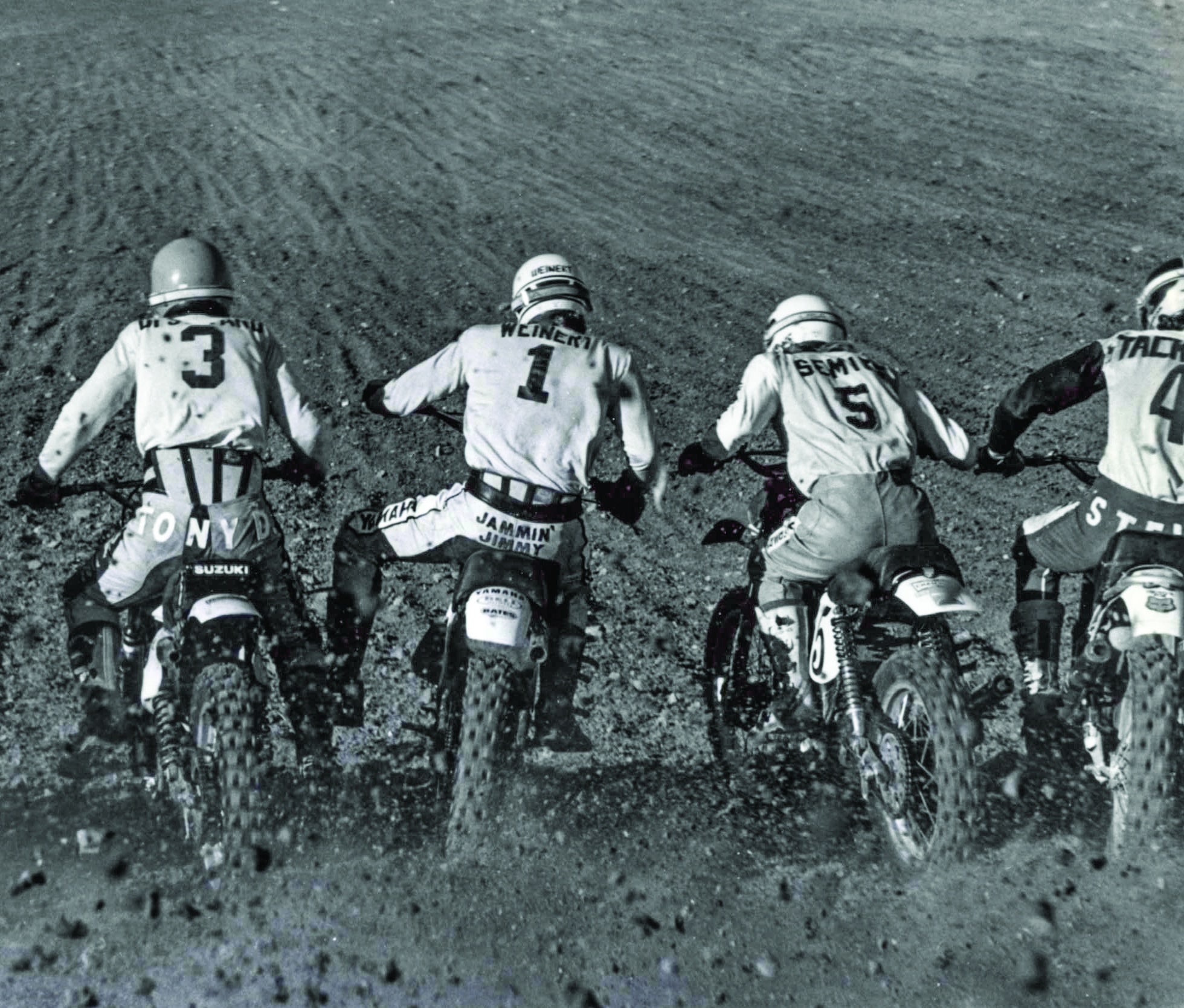
WHAT ABOUT THE OUTDOOR SERIES IN 1976? I came out like gangbusters and was leading the 250 outdoor Nationals and the Supercross series, and then my bike blew up in both motos at Rio Bravo. I lost the lead to Tony D in the 250 outdoors. But since most of the Supercross series was done by that point, I focused on the 500 Nationals. The first 1976 AMA 500 National was in Mexico, New York, and I broke my kneecap in practice. A big rock came up from Tony D’s bike and cracked my kneecap. I missed the next four 500 Nationals.
“I DID WELL ON THE KX125, AND KAWASAKI WANTED ME TO RACE IT IN 1978, BUT I WANTED TO RIDE THE BIGGER BIKES. BECAUSE OF THAT, I ALMOST DID NOT RIDE FOR KAWASAKI IN 1978.”
DIDN’T YOU RACE A 125 NATIONAL? In 1977, I tried the KX125 and was pretty fast on it. So, I decided to race it. The first time out racing it was in Illinois. It was a rough sand track. We were battling, and the last lap, I ran out of gas. I came in and asked my mechanic Steve Johnson, “So, if I ride it like that in the next one, I will probably run out of gas again?” He said, “Yeah, probably,” so I didn’t line up. Overall, I raced three other 125 Nationals in 1977 and made the top 10 in all of them. I just wanted to ride.
YOUR BEST 125 NATIONAL WAS IN MIDLAND, MICHIGAN. YOU FINISHED THIRD OVERALL BEHIND BOB HANNAH AND BROC GLOVER. I had gotten down to 166 pounds, but I was getting headaches. I said, “I can’t get that light, and the bike is not that fast.” I had to pin it, but I made it work. Here is an interesting note: Broc Glover told me that if it weren’t for me getting third at Midland and keeping Danny LaPorte off of the podium that day, he would not have won the 1977 “Let Broc Bye” Championship. He had it all figured out.

WERE YOU AT THE “LET BROCK BYE” RACE? No. That happened later in 1977, and I was not racing in San Antonio. I did well on the KX125, and Kawasaki wanted me to race it in 1978, but I wanted to ride the bigger bikes. Because of that, I almost did not ride for Kawasaki in 1978.
BUT, YOU DID RETURN TO KAWASAKI IN 1978. WERE YOU ON THE 250? Yes, I was on the 250, and during testing, the bike went from a fifth-place bike to a first-place bike. I was out there battling with Hannah at Hangtown. I won the first moto; he won the second moto, but we were rubbing paint in both. That was one of the meanest races we ever had. He even said, “I never had a race that great.” I had several injuries, and 1978 wasn’t the greatest.
TELL US MORE ABOUT BOB HANNAH. I will give you an interesting story. After I won the 1975 AMA 500 Championship in New Orleans, I was flying back to California, and the little skinny kid sitting next to me was Bob Hannah. We introduced ourselves to each other, and he told me he got heat exhaustion. He said, “That will never, ever, ever, ever, ever happen to me again.” The next year he came out as #39 and kicked everyone’s butt. He was just so confident it was sickening. He would just speak his mind. He talked a lot of crap but would get on his motorcycle and back it up. That was the difference. He was a character, and I loved it. He used to mess with me all the time
GOING INTO 1979, YOU WON THE OAKLAND SUPERCROSS BY OUTSMARTING EVERYONE. Do you remember Roy Turner? He had worked for Honda, and I got him to join me at Kawasaki. Just before the 1979 Oakland Supercross, he called me and said, “We are going to run a paddle tire at Oakland; it is all sand up here.”
I said, “Well, it is sand down here on the beach, too. What have you been smoking?” I get to the stadium and see this paddle tire on my bike. It had no side knobs. It was a regular dune paddle tire. I tried the tire, and it worked well out of the gate. I started much better than the other guys in practice and raced with it.
“YOU COULD CALL IT “THE GOOD, THE BAD, AND THE UGLY,” BUT I HAVE NO REGRETS. BACK IN MY DAY, WE WERE RACING EACH OTHER HARD, BUT WE ALL GOT ALONG AND HAD FUN — UNTIL PIERRE KARSMAKERS CAME ALONG.”
BUT WERE YOU LATER DISQUALIFIED? No. The AMA tried to disqualify me after the checkered flag. They said, “You cannot run a paddle tire.” But, Roy checked the rulebook and told the AMA, “Show us where it says we cannot run a paddle tire. It’s not in there, is it? Is there anything else? If not, get out of here and leave us alone.” Sometime later, the rulebook was changed to make paddle tires illegal.
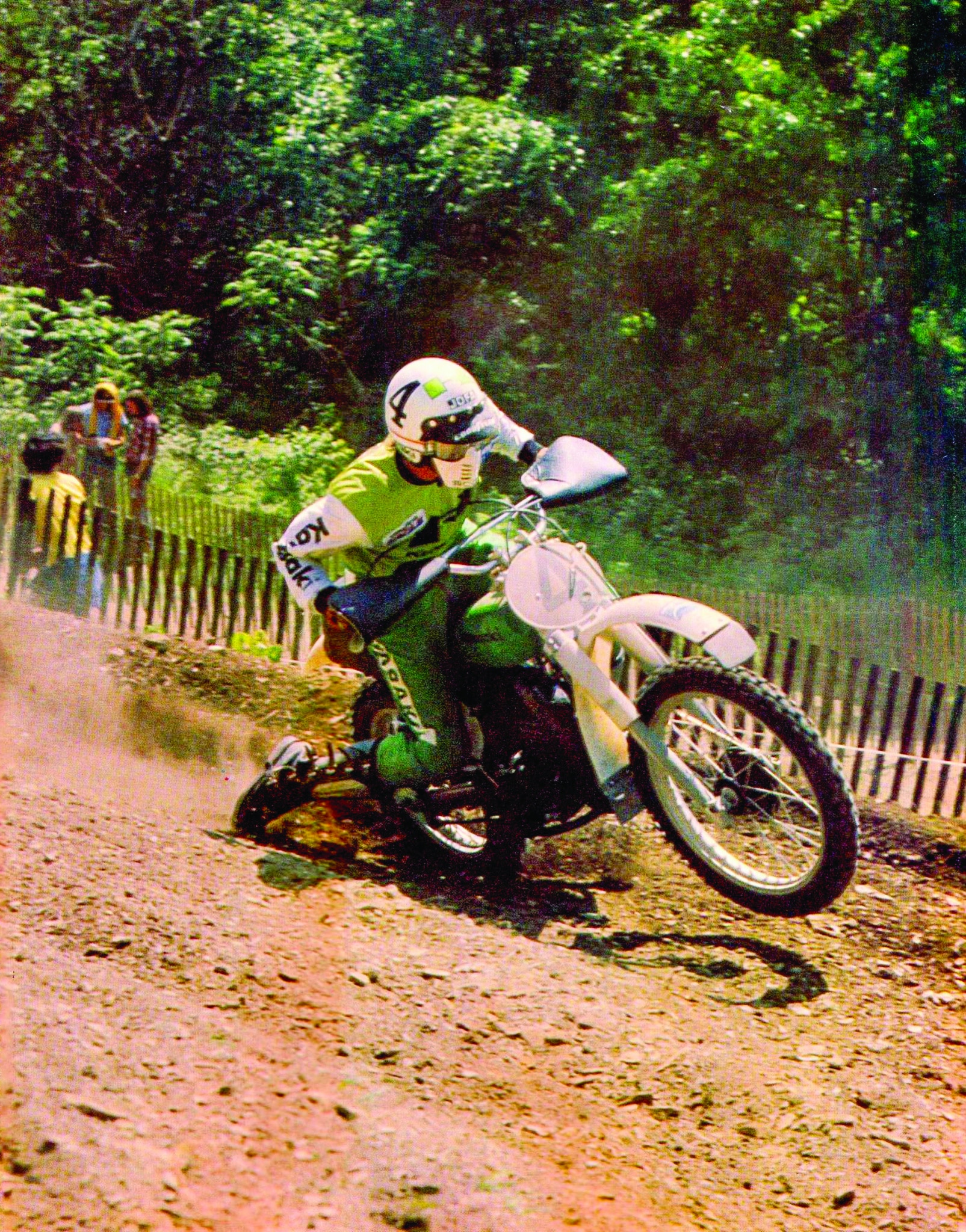
WHY WERE YOU WEARING A NECK BRACE AT OAKLAND? I hurt my neck Friday doing something for Kawasaki. I put my head right into the face of a jump. My trainer, Dean Miller, came over to the motel, massaged me up and put all this stuff on it. I had to take four Advil and drink two beers, which was no problem. He made a neck brace out of a Holiday Inn towel. He wrapped it all up and used a shoestring to tie it together. I really had to use it because my neck was so sore.
I RECENTLY WATCHED THE 1979 DAYTONA SUPERCROSS. THAT WAS A GREAT WIN FOR YOU! That was a good one. I came into turn one so fast. I went really wide and was initially way back, but I worked my way through the pack. I used a unique line after the pavement area where the whoops were a little lower and passed Bob Hannah for the win there. Bob is still mad to this day. He said, “I thought you were a lapper.”
I told him, “When was the last time a lapper has ever passed any of us on the last lap? Let it go; let me enjoy this win. Let the old man have some fun.” I was 28, and back then, that was about the time you retired. I still wound up second in the Supercross Championship that year.
1979 WAS PRETTY GOOD, SO WHAT HAPPENED WITH KAWASAKI IN 1980? Kawasaki kept me, but I knew my time at Kawasaki was basically done. Gary Mathers was the new team manager, and he planned to rearrange everything—from mechanics to secretaries. Everything was going to change. We had a big meeting, and I didn’t like what I heard. The Japanese boss said, “Jim, don’t quit. We’ll make you a test rider.” I tested a couple of times, but it was over.
BUT LATER YOU CAME BACK ON A CAN-AM? I played with it for a while and had it working okay. It was a 370, so it did not have the torque of the 400s. But by that time, I was tired, and that was it. I went off into life after racing and got into alcohol more, along with drugs. For 10 years it was pretty wild. I was 30, and I came back to New York to help my brother run the scrapyard. That kept me functioning, but it was a crazy, stupid time.
EVENTUALLY, THINGS GOT BETTER & YOU STARTED THE JIMMY WEINERT TRAINING FACILITY (JWTF). Yes, about 10 years ago we began JWTF. We have 105 acres. We are 30 minutes from the beach. People love it, and it is nice. The little kids want to learn, and the parents love it. When you see a little kid succeed, that smile on their face is pretty cool. I tell them, “You just keep doing this stuff for another 20 years and you can be a Champion.”
WHAT WAS YOUR FAVORITE RACE? I am going to give you the same answer I give everyone. The last one I won! So, Daytona in 1979. Daytona was always good to me, and I also won Daytona in 1972. What makes Daytona 1979 even more special was beating Bob Hannah.
WHICH ONE OF YOUR CHAMPIONSHIPS MEANS THE MOST? They were all good. The first one was pretty cool. When you finally get the first Championship, it is amazing. Winning the 1974 500 Motocross Championship was pretty cool. These days it seems like a Supercross Championship is more special, but that was not the case back in my day.
WHICH ERA WAS THE BEST TO BE A MOTOCROSS RACER, BACK IN THE 1970s OR NOW? Not in my era; that’s for sure! The money only got big in the late 1980s and early 1990s, and then culminated when Ricky Carmichael retired. Then, the economy took the big hit and everything went south. That was when everyone had to tighten their belts, not just the motorcycle industry.

SUM UP YOUR CAREER. WHAT DID IT LOOK LIKE? You could call it “The Good, the Bad, and the Ugly,” but I have no regrets. Back in my day, we were racing each other hard, but we all got along and had fun—until Pierre Karsmakers came along. When he came over, we had to get more serious, and when more Europeans came over, we had to get even more serious.
ANY FINAL THOUGHTS? My sister was a schoolteacher and followed my career closely. It must have been 15 years ago when she told me, “You don’t even know what you have accomplished. You don’t even realize who you are or what you have done.” I was just looking at her and thinking, “I just wanted to race my dirt bike and go fast.”


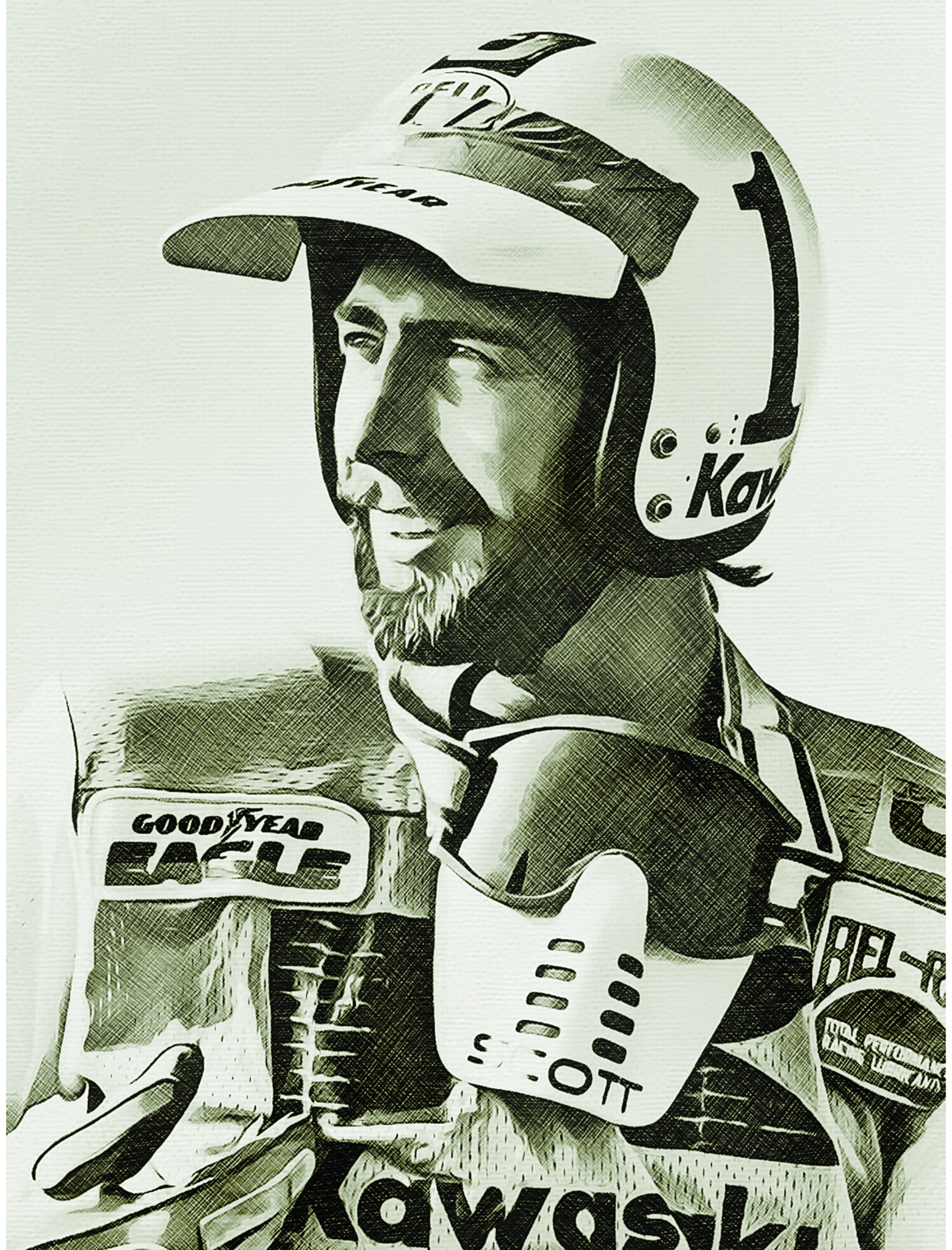




Comments are closed.